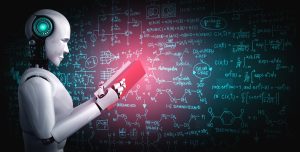Introduction
Deep learning, a subset of machine learning, is revolutionizing the field of artificial intelligence by enabling computers to learn and make predictions from vast datasets with remarkable accuracy and efficiency. In this comprehensive double-text article, we will explore the transformative impact of deep learning across various domains, from computer vision and natural language processing to autonomous vehicles and medical diagnosis.
Understanding the Architecture: Unraveling the Depths of Deep Learning Networks
At the heart of deep learning lies a complex architecture inspired by the intricate connections of the human brain. Deep learning networks consist of multiple layers of interconnected artificial neurons, each responsible for processing and analyzing different aspects of input data. Through this hierarchical structure, the network learns to recognize intricate patterns and features that are crucial for the task at hand.
Mastering Complexity: Unstructured Data and Deep Learning’s Domain Expertise
Deep learning excels at handling complex and unstructured data, including images, audio, and text. By leveraging large datasets, deep learning networks can achieve remarkable feats, such as object recognition in images, speech transcription and translation, and even content generation, where the network generates realistic images or natural language text.
Balancing Power and Resources: Deep Learning’s Computational Demands
While deep learning yields impressive results, it can be computationally demanding and requires substantial amounts of high-quality data for effective training. Consequently, deep learning is often employed in applications where the benefits of high accuracy outweigh the computational and data costs. Nevertheless, ongoing research and technological advancements are constantly improving the efficiency and scalability of deep learning algorithms.
Expanding Horizons: Applications and Opportunities
Deep learning has found applications in a wide range of domains, driving groundbreaking advancements. In computer vision, deep learning enables object detection, segmentation, and even facial recognition. Natural language processing benefits from deep learning algorithms that understand and generate human-like text. In autonomous vehicles, deep learning enables real-time perception and decision-making. Medical diagnosis benefits from deep learning’s ability to analyze complex medical imaging data for accurate detection and prediction. With each passing day, new possibilities emerge as deep learning transforms industries and pushes the boundaries of what is possible.
Diving Deeper: Resources and Future Prospects
For those interested in delving deeper into the world of deep learning, abundant online resources are available, including comprehensive courses, tutorials, and research papers. As deep learning continues to gain momentum and solve complex problems in various domains, it is an exciting time to be part of the artificial intelligence landscape, with countless opportunities for innovation and impact.
Conclusion
Deep learning, with its powerful neural network architecture, is revolutionizing machine learning and data analysis. Its ability to handle complex and unstructured data has paved the way for unprecedented breakthroughs across domains. While computational demands and data requirements persist, ongoing advancements promise to enhance the efficiency and scalability of deep learning algorithms. As deep learning continues to evolve, it offers a wealth of opportunities for researchers, practitioners, and enthusiasts to drive transformative advancements and unlock new realms of artificial intelligence. Embracing the potential of deep learning opens doors to a future where data-driven insights lead us to new frontiers of knowledge and innovation.


